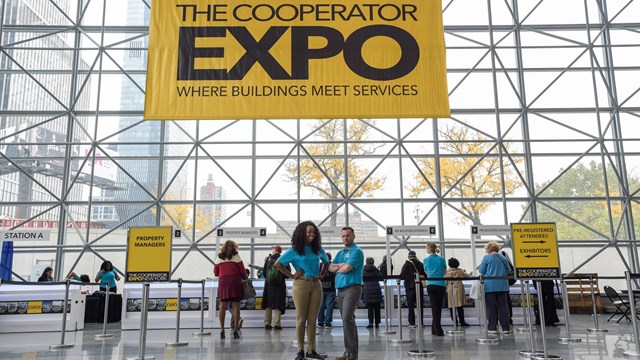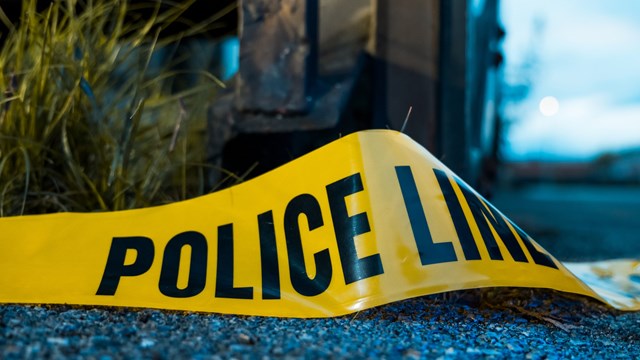A panel of emergency preparedness experts from emergency management to officials with the NYPD and SEIU Local 32BJ told a roomful of board members and managers the urgency of preparing residents and building staff for events ranging from terrorism to fire to power outages and weather disturbances.
More than 150 people attended the Argo University for Boards seminar at The New School for Social Research June 15th gathering a wealth of information on how to prepare for any emergency situation.
Front Line of Defense
In most scenarios, your building staff is called upon to deal with any situation prior to the arrival of the first responders: police, fire, health department, medical professionals or emergency management officials.
Ira Tannenbaum, the assistant commissioner of the New York City Office of Emergency Management (OEM), gave an overview of the services OEM provides.
Although New York City is and remains the number 1 terrorist target as seen on 9/11, the most common emergencies handled by OEM, notes Tannenbaum, are more routine: weather-related as in Hurricane Sandy or a fire, water main break, transportation disruption or a massive citywide power outage like the Northeast blackout in 2003. “What do we do every day? We are an agency like the fire department and the police department and 45 other agencies in the New York City government that are here to serve you and work with you and represent you and ensure that you as residents of New York City have what you need. We certainly plan and prepare for emergencies every day,” says Tannenbaum.
A building’s own security is no different but on a smaller scale, officials said. A recent water main break affected 40 units in Queens. “How do you as a board address that? What steps would you take if the power was out for an extended period of time?” Tannenbaum asked. A building is in some ways like a small business. Preparedness involves everything from a properly trained staff to where building documents, floor plans, contact lists and other essential items are stored so they can be easily retrieved in an emergency, he says. Residents, especially the elderly and most vulnerable, depend on management and the building staff to know what to do and where to go during an incident. Local Law 26, which calls for emergency plans, preparedness drills and installing safety signage in commercial buildings, doesn’t yet exist on the residential side, Tannenbaum noted. For more information about OEM, go to nyc.gov/emergencymanagement.To receive notification alerts, go to Notify NYC.
Worst Case Scenario
David Starr, the director of Countermeasures Response for the New York City Department of Health and Mental Hygiene, said that because the city is a target they prepare every day for the worst case scenario: a bioterrorism attack or a medical outbreak like Anthrax. To that end, health officials conducted a full scale training exercise in 2014 to simulate the response, treatment and distribution of vaccines to the affected population, which would be all of its 8.5 million citizens, visitors and workforce. During such an event schools are set up as pod sites where the public would go for treatment. “We really want neighbors to take care of neighbors. Know the vulnerable population in your building and try to take care of them in any emergency,” Starr says.
Train Your Building Staff
Howard Rothschild, president of the Realty Advisory Board on Labor Relations, which represents building owners, managing agents, and contractors in the real estate industry, said professional training is essential, and your building employees, quote unquote, can’t be sleeping on the job. Have management set up a call tree to communicate with residents in case of an emergency. Know where your vital building documents are stored and if any hazardous chemicals or flammables exist on-site. “You need to be prepared,” Rothschild says.
Make sure you have the right tools: a battery-operated radio, flashlights/working batteries, a first aid kit, dust masks, fluorescent tape, bottled water and non-perishable food. Also, make sure, Rothschild says, that your video cameras and security system is functioning. The time to check is not after an incident has occurred, he says. Routinely check your building equipment: your water tanks, boiler, HVAC and life safety equipment. “Employees need to be vigilant,” Rothschild says. “Doors need to be locked when not in use.”
Michael Green, deputy director, Building Service 32BJ Training Fund, said the local union offers many training courses from building maintenance to academics to computer learning to security awareness. The New York Safe and Secure Program is offered to hundreds of buildings and has trained over 6,000 building service workers. Courses in the residential track include disaster preparedness; crisis prevention and management; security awareness and terrorism awareness.
Argo is also sponsoring three security courses for its building personnel on Monday, July 25; Wednesday, July 27; and Friday, July 29, all from 11 a.m. to 2 p.m. at the union’s 32BJ Training Fund headquarters, 25 West 18th Street (between Fifth and Sixth avenues). To sign up call 212-896-8619 or email marinah@argo.com.
Practice Vigilance and Communicate
Det. Chris Mazzey of the NYPD Counterterrorism Bureau, said that the department offers civilian training and will go conduct classes at buildings upon request. Mazzey stressed that building administrators, shareholders and unit owners can help by being the NYPD’s eyes and ears by providing information about their buildings and their own neighborhood.
Civilian training is offered on anything from crime prevention to workplace violence to active shooter incidents, which after San Bernardino and Orlando, is the number 1 most requested topic. In an active shooter incident, the Department of Homeland Security suggests a “Run Hide Fight” policy, while the police advocate for ABCs—which stands for avoid the situation; barricade yourself and hide; or at last resort, confront the shooter and take action.
Mazzey urged the audience to sign up for the NYPD Shield Program, which is a public-private partnership helping residential communities and private sector businesses protect themselves against terrorist threats. Go to NYPD Shield for more information.
Debra A. Estock is managing editor of The Cooperator.










Leave a Comment